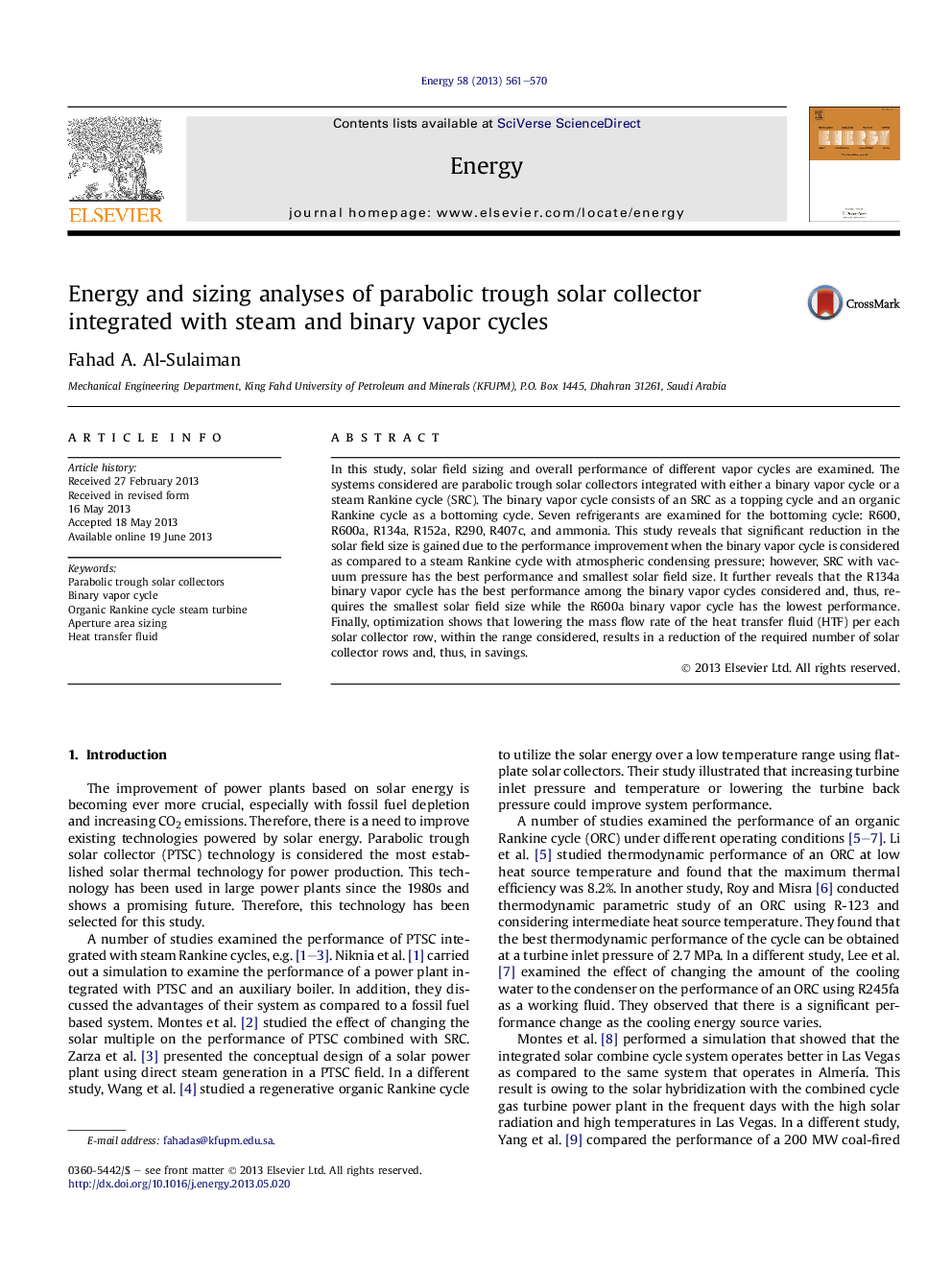| Article ID | Journal | Published Year | Pages | File Type |
|---|---|---|---|---|
| 1732916 | Energy | 2013 | 10 Pages |
Abstract
In this study, solar field sizing and overall performance of different vapor cycles are examined. The systems considered are parabolic trough solar collectors integrated with either a binary vapor cycle or a steam Rankine cycle (SRC). The binary vapor cycle consists of an SRC as a topping cycle and an organic Rankine cycle as a bottoming cycle. Seven refrigerants are examined for the bottoming cycle: R600, R600a, R134a, R152a, R290, R407c, and ammonia. This study reveals that significant reduction in the solar field size is gained due to the performance improvement when the binary vapor cycle is considered as compared to a steam Rankine cycle with atmospheric condensing pressure; however, SRC with vacuum pressure has the best performance and smallest solar field size. It further reveals that the R134a binary vapor cycle has the best performance among the binary vapor cycles considered and, thus, requires the smallest solar field size while the R600a binary vapor cycle has the lowest performance. Finally, optimization shows that lowering the mass flow rate of the heat transfer fluid (HTF) per each solar collector row, within the range considered, results in a reduction of the required number of solar collector rows and, thus, in savings.
Related Topics
Physical Sciences and Engineering
Energy
Energy (General)
Authors
Fahad A. Al-Sulaiman,
